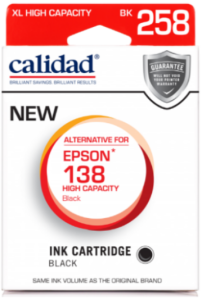Well, the answer may be no, if you have full ownership of the product without limitation. This view is supported by a High Court ruling in Calidad Pty Ltd v Seiko Epson Corporation.
In this case, Seiko manufactured patented ink cartridges under the brand name “Epson”. A third party obtained used cartridges and injected ink into them to make them reusable. Calidad imported and sold these remanufactured cartridges in Australia. In 2015, Seiko commenced proceedings against Calidad for patent infringement.

After losing this case in both the Federal Court and the Full Court, Calidad appealed to the High Court by grant of special leave. In a majority decision, the High Court held that refilling ink into OEM cartridges (with reprograming or replacing the embedded microchips) by customers does not amount to patent infringement.

*These are remanufactured Epson cartridges that have been precision processed with specially formulated Calidad ink. These products are not endorsed by Epson. Epson and Epson printer models are registered trademarks of Epson Seiko Co. Calidad has no affiliation with Epson.
Exclusive rights given by a patent
Section 13(1) of the Patents Act 1990 (Cth) grants a patentee the exclusive rights to use or exploit the invention disclosed in a patent for a limited period of time (usually 20 years). In this case, there was no dispute that only Seiko can manufacture these patented ink cartridges. But can Seiko, as the patentee, prevent others from remanufacturing these cartridges after they have been sold to customers?
Implied licence
There is a longstanding principle of implied licence in UK law and Australia also adopts it. According to this principle, the sale of a patented product by the patentee includes an implied licence that the purchaser may use the product without infringing the rights of the patentee. Seiko argued that the implied licence gives the cartridge purchasers a right to use but not modify them. Furthermore, these “imposed conditions” apply to not only the initial purchaser but all subsequent owners of the product. Seiko insisted that their products are designed to be single-use, and any modifications to make them reusable are out of the scope of this implied licence.
Exhaustion of rights
However, the law of personal property provides that the owner of chattels has an absolute right to use or dispose of their personal property as they think fit. In this regard, a patentee’s exclusive rights for a product ought to be exhausted on sale. The rationale is that once the patentee has received on sale the royalty for their invention in that particular product, the purchaser will then have full control of the product without any further restriction. According to this exhaustion doctrine, customers can modify the cartridges as far as they have full ownership over the product. Calidad or any third party should be protected to modify or repair the cartridges they own.
The High Court’s decision
Both the principles of implied licence and exhaustion of rights came from UK law and have been adopted in Australia for a long time. In this case, the High Court faced a fundamental question: “can a purchaser use or dispose of a patented article without the need for the patentee’s consent?” In the majority judgment, the High Court upheld that Seiko’s exclusive rights were exhausted when the product was sold to its purchaser. In particular, the High Court concluded that the modifications to the OEM cartridges were consistent with the exercise of the rights of an owner to alter an article to improve its usefulness and enable its reuse. This decision is also in line with the US and EU positions.
US and EU Position
In Impression Products v. Lexmark International, the Supreme Court of the United States held that Lexmark had exhausted its patent rights in the cartridges “the moment it sold them”. Accordingly, the act of refilling Lexmark cartridges by Impression Products did not amount to patent infringement. Nevertheless, their Honours acknowledged that the single-use/no-resale restrictions in Lexmark’s contracts with its customers may be enforceable under contract law, but not patent law. European Union has a similar policy such that once an IP owner has sold the product, they cannot prevent the further circulation of that product in the market.
Takeaways
The High Court decision clears the way for small businesses to repair and remanufacture patented products as far as they have full ownership of them and are not in breach of other terms. In general, it is also a win for consumers because they may have an opportunity to choose consumables between OEM products and remanufactured products.
The High Court judgment in favour of Calidad highlights that a patentee’s exclusive rights with respect to a product usually exhaust on sale. Imposing restrictions on after-sale use of patented products cannot be achieved implicitly. These restrictions have to be negotiated explicitly to give some certainty to both parties.
Not sure about whether you have infringed someone’s IP? Contact Kings Patent and Trade Marks Attorneys for professional advice on IP protection and infringement. Book a complimentary consultation to speak with our expert Patent Attorney Brisbane team today.
Table of Contents Your brand’s unique identifiers are a simple way to connect with customers and grow your business. If those unique identifiers are copied, it can dilute your brand and damage consumer confidence. This can be prevented by registering a trade mark with IP…
The patent system allows innovators to claim exclusive rights to their inventions. That’s important, because it means inventors can recoup their expenses in research and development, and it encourages the market to consistently invest in new technologies. However, not all inventions are patentable. To qualify…
Artificial Intelligence (AI) is changing the way we think of intellectual property (IP) law. Is Australia’s legislation equipped to handle widespread AI innovations and inventions? Australia enjoys some of the world’s most robust intellectual property law. Local regulations allow creators, inventors and innovators to turn…